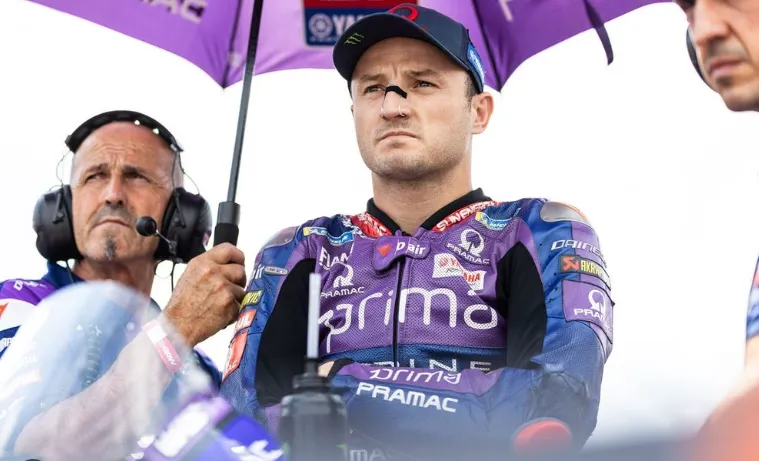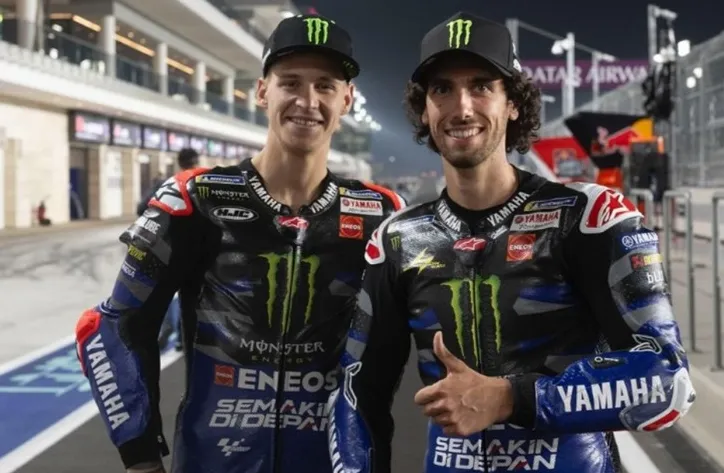
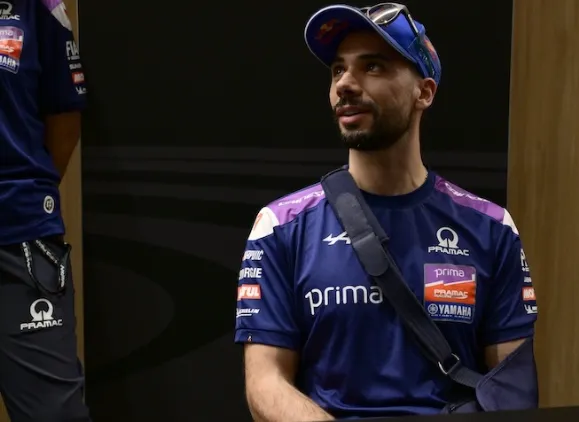
MotoGP Airbag Under Scrutiny: Miguel Oliveira Speaks Out on Rider Safety and Calls for Change from FIM
MotoGP has always stood at the cutting edge of motorsport innovation, especially when it comes to rider safety. With speeds soaring above 350 km/h and the constant risk of high-side crashes, even the slightest improvement in protective technology can mean the difference between walking away from a crash—or not. One such innovation is the airbag system integrated into leather racing suits. But now, Portuguese rider Miguel Oliveira is speaking out, questioning just how effective this technology truly is.
In a candid interview with Motorsport Magazine, Oliveira, a seasoned racer and trained dentist, made waves by openly criticizing the current airbag regulations and their real-world efficiency. While he acknowledged the concept as important, his own injury experiences have left him skeptical. Is it time for MotoGP and the FIM (Fédération Internationale de Motocyclisme) to revisit their airbag standards?
Miguel Oliveira’s crash injuries spark doubts about airbag systems
At first glance, Oliveira’s comments might seem controversial. After all, airbag suits have become standard safety equipment in MotoGP and are widely credited with reducing the severity of crash injuries. But Oliveira’s recent experience tells a more complicated story.
“I’m not sure the airbag is that big of a safety benefit,” he stated. “I didn’t break my collarbone, but I hurt my shoulder and joint. And collarbone fractures still happen—even with the airbag.”
This statement came after Oliveira suffered yet another shoulder injury, despite the airbag deploying correctly during a fall. It’s a powerful insight that comes not from criticism for the sake of controversy, but from a rider who’s felt firsthand what today’s safety systems can and cannot do.
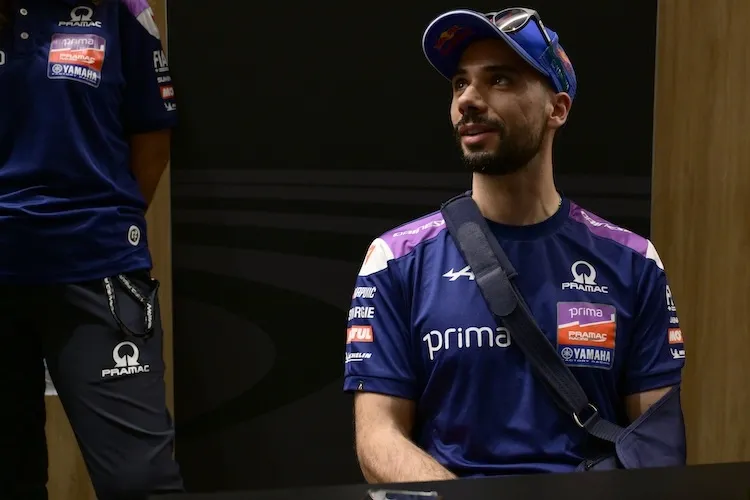
As a professional with a medical background, Oliveira brings a unique perspective to the table—one grounded not only in racing but in understanding how the human body reacts under trauma.
Different body types, different needs: A one-size-fits-all problem
One of Oliveira’s strongest arguments touches on a fundamental issue: the lack of customization in airbag protection.
“Every rider has a different body shape,” he emphasized. “And the cut of the leather suit plays a crucial role in protection.”
This single sentence reveals a larger, systemic issue in MotoGP safety gear. While leather suits with airbag integration are tailored to some extent, there is no universal standard that accommodates the unique biomechanics of each rider. Some racers have broader shoulders, others have shorter torsos or longer necks—yet the suits are largely designed under generalized specifications.
If the airbag inflates in an area that doesn’t directly match a rider’s anatomy, then protection could be compromised. For example, an airbag that inflates around the chest may not fully cushion the collarbone or shoulder joint—two areas where riders often absorb the brunt of impact.
This mismatch may help explain why collarbone fractures remain common despite airbag deployment. Riders like Oliveira are calling on the MotoGP safety community to consider not just whether airbags work—but how they work for each rider.
An invitation for open discussion: Oliveira calls for FIM involvement
Beyond criticism, Oliveira offered a constructive path forward.
“I would like to see a discussion about airbag regulations. Every leather suit manufacturer must comply with standards, so maybe this should be raised with the FIM,” he said.
This is a crucial point. Currently, MotoGP airbag systems must meet FIM’s homologation standards, but the specifications haven’t evolved at the pace of feedback from riders. Oliveira’s suggestion to bring the matter to the governing body isn’t about abolishing airbags—it’s about improving them collaboratively.
He envisions a forum where riders, suit manufacturers (like Alpinestars and Dainese), and FIM officials work together to redefine protection standards. Such a collaboration could address:
-
The positioning and timing of airbag deployment
-
Anatomical customization of airbag shapes
-
The influence of suit cut and leather tension on protection coverage
-
Long-term injury data correlation with airbag effectiveness
Given the growing evidence from crash incidents, the sport might be overdue for such a serious reassessment.
Airbags: revolutionary safety or misunderstood shield?
To understand the context, it’s important to appreciate how far MotoGP has come in terms of safety. The airbag system, first mandated in 2018, was hailed as a game-changer. Sensors inside the suit detect rapid deceleration, triggering the deployment of airbags around the chest, back, and shoulders within milliseconds.
Manufacturers claim that these airbags reduce impact forces by up to 90%. And in many cases, riders walk away from terrifying crashes with little more than bruises. But as Miguel Oliveira points out, that success story may not be universal.
In 2023 alone, multiple riders—Oliveira included—suffered shoulder dislocations, collarbone fractures, and joint trauma, even in crashes where the airbag was activated. This contradiction has left many wondering if the system’s limitations are being swept under the rug in favor of a good PR story.
Could it be that airbags give a false sense of security? Or are the injuries simply so violent that even high-tech gear can only do so much?
Why Miguel Oliveira’s comments matter more than ever
Oliveira isn’t the only one expressing concern—but he is one of the few willing to speak publicly. And that matters. Riders often stay quiet about safety issues for fear of disrupting sponsor relationships or appearing weak. But Oliveira, known for his professionalism and thoughtful demeanor, has chosen a different path—one rooted in honest evaluation and progress.
As a trained dentist, he understands trauma and healing in ways most racers don’t. This makes his insight particularly valuable in shaping future standards. He’s not calling for blame—he’s calling for science-based reform.
The MotoGP community has a responsibility to listen. Rider feedback should be the cornerstone of safety innovation, not just crash test data or manufacturer claims. If Oliveira is willing to open this conversation, others will surely follow.
Manufacturers respond: Evolution or stagnation?
So far, major airbag manufacturers like Dainese and Alpinestars have remained relatively quiet in response to Oliveira’s remarks. Both companies continue to push new models and promote innovations such as multi-zone inflation and track-specific algorithms.
However, without greater transparency, it’s hard to verify whether these systems truly match the real-world needs of all riders. It may be time for these companies to work more closely with FIM to share data—and more importantly, to conduct independent, third-party evaluations based on crash footage and rider testimonies.
What’s clear is that incremental change may no longer be enough. With injuries still happening in protected areas, the airbag conversation must move from marketing hype to evidence-based design.
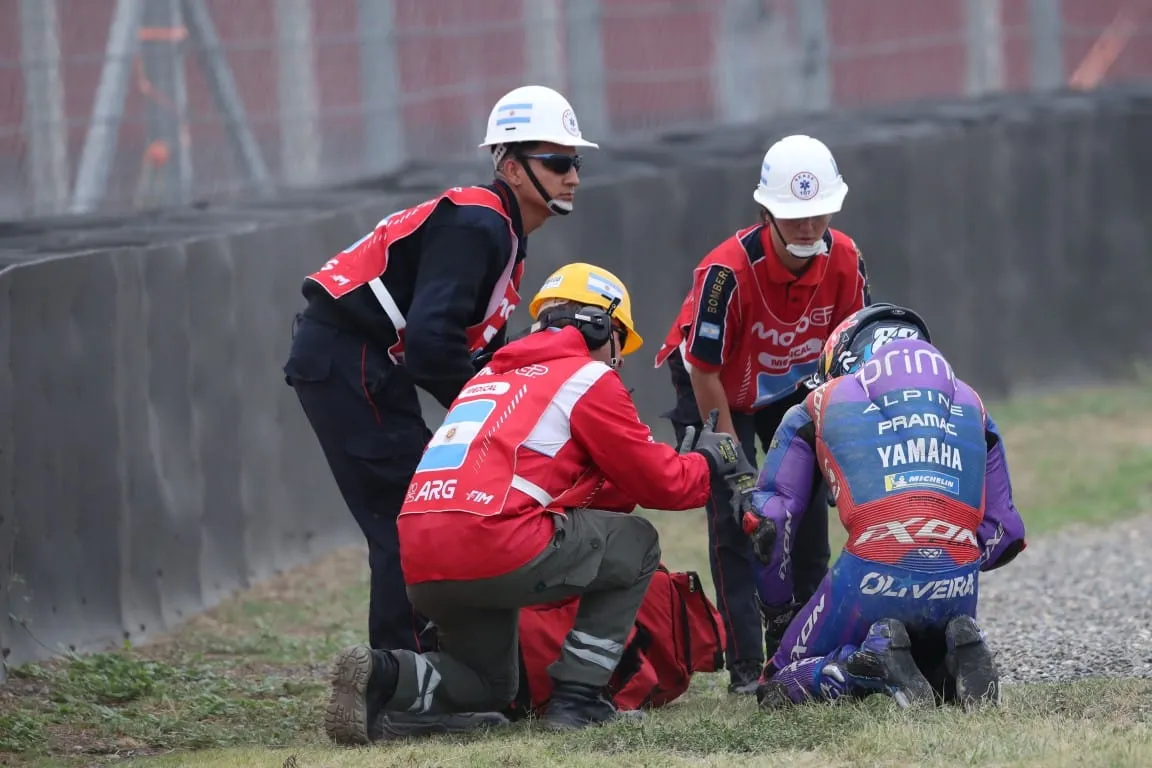
What should FIM do next? A roadmap for reform
The FIM is in a position to lead transformative change—if it chooses to act. Oliveira’s suggestions point toward a multi-phase strategy:
-
Open a rider-driven review panel – Include voices from all manufacturers and actively competing riders.
-
Audit crash data – Compare airbag deployment events with resulting injuries over the last five years.
-
Revise homologation standards – Introduce customization protocols for different body types and riding styles.
-
Mandate transparency – Require manufacturers to disclose full specifications, inflation pressure ranges, and anatomical coverage areas.
-
Support R&D funding – Allocate resources for research into next-gen materials, pressure sensors, and predictive crash algorithms.
If FIM implements even a fraction of these changes, Oliveira’s remarks may spark the biggest shift in rider safety standards since the introduction of airbag suits themselves.
Final thoughts: A rider’s pain, a sport’s wake-up call
Miguel Oliveira’s doubts about airbag effectiveness aren’t a rebellion against technology—they’re a passionate plea for innovation that truly protects riders in the most dangerous sport on two wheels. His willingness to start the conversation shows a commitment to MotoGP’s future that goes beyond competition.
Yes, airbag suits have saved lives. But as Oliveira’s experience shows, they can and must be smarter, more adaptive, and more personalized.
In a sport where fractions of a second decide victory and failure, it’s time for safety systems to operate with the same precision. It’s time to ask: is MotoGP ready to embrace the next wave of rider protection evolution—or will it wait until the cost becomes too high?








